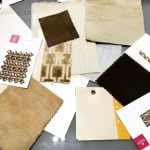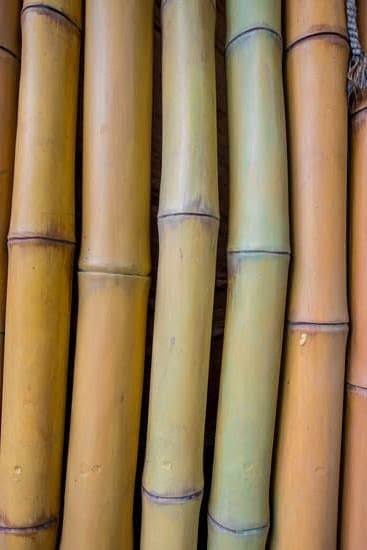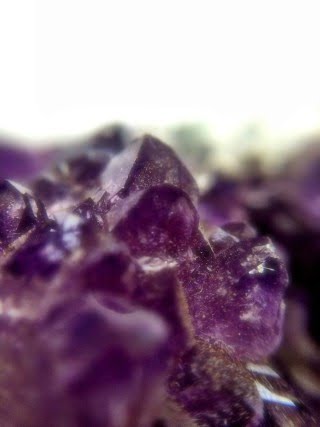Feng Shui is an ancient Chinese practice that focuses on harmonizing individuals with their surroundings to promote positive energy flow and improve various aspects of life. In this article, we will delve into the fundamentals of Feng Shui, specifically exploring the application of its principles in East-facing houses.
Direction plays a crucial role in Feng Shui, as each cardinal point represents different elements and energies. The East, associated with the element of wood and the sunrise, symbolizes new beginnings, growth, and vitality. Understanding the characteristics of an East-facing house can help homeowners optimize the flow of positive energy within their living space.
When it comes to Feng Shui elements and colors for the East House, incorporating wood-based furnishings and green hues can enhance prosperity and overall well-being. By strategically placing objects and decor items in alignment with Feng Shui principles, residents can create a harmonious environment that promotes health, happiness, and success within their home.
Importance of Direction in Feng Shui and Focus on the East
Feng Shui emphasizes the significance of direction in harnessing positive energy flow within a living space. Each direction is believed to have its own unique qualities and influences on various aspects of life. In Feng Shui, the East is associated with new beginnings, health, family, and creativity. By understanding and applying the principles of Feng Shui to the East sector of a house, individuals can create a harmonious environment that promotes well-being and prosperity.
In a Feng Shui East House, it is important to pay attention to the layout and design elements that align with the characteristics of the East direction. Incorporating elements such as wood and green colors can enhance the energy flow within this area.
The placement of furniture, decorative pieces, and lighting should also be thoughtfully arranged to optimize the positive influences associated with the East direction. By creating a balanced and welcoming atmosphere in this sector of the house, occupants can benefit from improved health, vitality, and creativity.
To further enhance the Feng Shui principles in an East House, individuals can consider implementing specific remedies for common issues that may arise. For example, if there are areas in the East sector that feel stagnant or cluttered, using mirrors or plants can help to revitalize the energy flow in those spaces.
Additionally, incorporating natural light sources can bring in positive energy and create a sense of openness and vitality within the home. By addressing any imbalances or blockages within the East sector through targeted remedies, individuals can create a more harmonious environment that supports their overall well-being and success.
Characteristics of the East House in Feng Shui
When it comes to Feng Shui, the direction in which your house faces plays a significant role in determining the flow of energy within your living space. In this ancient practice, each cardinal direction is associated with specific elements and characteristics that can influence various aspects of your life.
The East House holds particular importance in Feng Shui as it is linked to new beginnings, family relationships, and health. By understanding the unique characteristics of the East House, you can optimize the energy flow in your home to create a harmonious environment.
In Feng Shui, the East House is connected to the element of wood and represents growth, vitality, and abundance. When harnessing the energy of this direction, it is essential to incorporate elements that enhance these qualities in your living space. By utilizing colors, shapes, materials, and decor that resonate with the Wood element, you can create a supportive environment that promotes personal growth and prosperity. Here are some characteristics of the East House in Feng Shui:
- Symbolizes new beginnings and fresh starts
- Associated with family relationships and harmony
- Represents health and well-being
- Linked to growth, expansion, and abundance
To optimize the energy flow in your East House according to principles of Feng Shui, it is crucial to pay attention to both interior design elements and external surroundings. By incorporating specific colors, materials, and decor items that align with the characteristics of the East House, you can create a balanced environment that supports your goals and intentions.
Additionally, enhancing natural light sources in areas facing east can further boost positive energy flow throughout your home. By implementing these tips for optimizing energy flow in the East House, you can maximize its potential for creating a nurturing living space filled with positive vibrations.
Feng Shui Elements for Enhancing Energy Flow in the East House
- Wood: Incorporate wooden furniture or decor pieces to enhance growth energy.
- Green: Use shades of green in paint or decor items to represent vitality.
- Rectangular shapes: Choose furniture or design elements with rectangular shapes to symbolize stability and support.
- Lush plants: Place healthy green plants in areas facing east for added freshness and positivity.
Feng Shui Elements and Colors for the East House
When it comes to implementing Feng Shui in your East house, understanding the elements and colors that can enhance the energy flow is crucial. The East is associated with the element of wood, representing growth, vitality, and new beginnings. Incorporating this element into your home can promote harmony and balance in your living space.
To enhance the wood element in your East house, consider adding plants and wooden furniture or décor pieces. Live plants not only bring a sense of nature indoors but also help purify the air and create a calming atmosphere. Additionally, incorporating shades of green and brown into your color scheme can amplify the wood energy in your home.
In Feng Shui, each direction is also associated with specific colors that resonate with the elements present in that area. For the East house, colors like green and teal are ideal choices to enhance the wood element. These hues can create a sense of tranquility and vitality in your space, promoting positive energy flow throughout your home. It is essential to strike a balance between these colors to ensure a harmonious environment conducive to well-being.
- Incorporate live plants such as bamboo or money plant to bring in the wood element.
- Choose furniture made from wood or add wooden décor pieces for a natural touch.
- Opt for shades of green and brown in your color palette to enhance the wood energy.
Tips for Optimizing Energy Flow in the East House
Balance Yin and Yang Energies
In Feng Shui, it is essential to balance the yin and yang energies in your home to ensure harmony and positive energy flow. To optimize the energy flow in an East House, you can incorporate both yin and yang elements. For example, you can introduce soft textures, gentle lighting, and calming colors for the yin energy.
Meanwhile, you can add bold accents, natural materials, and vibrant colors to enhance the yang energy. By striking a balance between these two energies, you create a harmonious environment that promotes well-being.
Clear Clutter and Obstacles
Clutter has a significant impact on the flow of energy in a space according to Feng Shui principles. In an East House, it is crucial to keep the area clutter-free to allow for the smooth movement of qi (energy). Remove any unnecessary items that obstruct pathways or block natural light.
Additionally, eliminate any sharp corners or obstacles that may disrupt the flow of energy. By creating an open and unobstructed space, you invite positive energy into your home and promote a sense of peace and balance.
Enhance Natural Light
Natural light is considered a vital source of positive energy in Feng Shui practices. In an East House, maximizing natural light can help uplift the energy levels and create a bright atmosphere. Ensure that windows are clean and unobstructed to allow sunlight to enter freely.
You can also incorporate mirrors strategically to reflect light throughout the space. By harnessing the power of natural light, you not only improve the overall ambiance of your East House but also promote vitality and positivity within your living environment.
Feng Shui Remedies for Common Issues in the East House
Addressing Imbalance and Blockages
In Feng Shui, a well-balanced home is essential for promoting harmony and positive energy flow. When it comes to the East House, which is associated with health, family, and growth, certain common issues such as imbalance and blockages can disrupt the flow of chi.
To address these issues, it is crucial to declutter the space and remove any obstacles that may be hindering the energy flow. By creating a clear pathway for chi to circulate freely, you can restore balance and promote a sense of well-being in your East House.
Enhancing Vitality With Natural Elements
One effective remedy for common issues in an East House is to incorporate natural elements that promote vitality and growth. In Feng Shui, the elements of wood and water are particularly beneficial for enhancing the energy flow in the East sector of your home.
Consider adding plants, fresh flowers, or wood furniture to bring the rejuvenating qualities of nature into your living space. Additionally, incorporating water features such as a small fountain or aquarium can help activate positive chi and create a harmonious environment in your East House.
Balancing Colors and Lighting
Colors play a significant role in Feng Shui when it comes to creating a balanced and harmonious living environment. In an East House, using colors that correspond with the Wood element – such as greens and browns – can promote growth, health, and prosperity. Additionally, adequate lighting is essential for optimizing energy flow in your home.
Natural light sources are ideal for bringing positive chi into your East House. If natural light is limited, consider using full-spectrum light bulbs or mirrors to enhance illumination and create a vibrant space filled with positive energy.
Creating a Harmonious Environment in the East House
One of the key principles of Feng Shui is to create a harmonious environment that promotes positive energy flow and enhances overall well-being. When it comes to the East House, there are specific guidelines and recommendations that can help you achieve balance and harmony in your living space. The East direction is associated with new beginnings, growth, and creativity in Feng Shui, making it essential to optimize this area of your home.
To create a harmonious environment in the East House, start by decluttering and organizing the space effectively. Clutter can block the flow of energy and hinder positive vibes from circulating freely. Consider incorporating elements like plants, natural light, and artwork with vibrant colors to uplift the energy in the East House. Plants symbolize growth and vitality, while natural light brings warmth and positivity into the space.
In addition to physical elements, consider adding meaningful decor items that resonate with you personally. Whether it’s family photos, inspirational quotes, or sentimental objects, these touches can enhance the emotional connection you have with your home. By infusing your personal style and preferences into the East House design, you can cultivate a harmonious environment that reflects your unique personality and fosters a sense of comfort and tranquility.
| Key Elements for Creating Harmony in the East House | Benefits |
|---|---|
| Decluttering and organizing space effectively | Promotes free flow of positive energy |
| Incorporating plants, natural light, and vibrant colors | Symbols of growth, vitality, warmth, positivity |
| Adding meaningful decor items that reflect personal style | Enhances emotional connection with the living space |
Case Studies
Feng Shui is an ancient practice that aims to harmonize individuals with their surrounding environment through the arrangement of objects and layout of spaces. When it comes to the design of houses, Feng Shui plays a crucial role in determining the flow of energy within the living space. In particular, the orientation of a house, such as an East House, can significantly impact the overall energy dynamics and influence the well-being of its inhabitants.
In a Feng Shui East House, proper attention should be given to maximizing the potential positive energy flow from the east direction. The east is associated with attributes like new beginnings, growth, and vitality. To enhance these qualities in an East House, elements such as wood and water are favorable. Incorporating shades of green and blue in the decor can also amplify the positive energy in this space.
Furthermore, successful applications of Feng Shui in East House design often involve decluttering and organizing to allow for a smooth circulation of energy throughout the house. Placing mirrors strategically to reflect natural light from the east can brighten up the space and promote a sense of openness and renewal. By incorporating these key principles of Feng Shui into the design and layout of an East House, residents can experience improved harmony and balance in their living environment.
| Concept | Description |
|---|---|
| Orientation | Maximizing positive energy flow from the east direction |
| Elements and Colors | Use wood and water elements with shades of green and blue for enhanced energy |
| Organization | Decluttering and organizing to facilitate smooth circulation of energy in space |
Conclusion
In conclusion, understanding and implementing the principles of Feng Shui in your East House can have a profound impact on the energy flow and overall harmony within your living space. By paying attention to the directionality of your home and incorporating elements and colors that are associated with the East area, you can create a space that promotes positivity, vitality, and abundance.
To optimize the energy flow in your East House, it is essential to keep the space clutter-free and well-organized. Incorporating natural elements such as wood, green plants, and water features can also help to enhance the flow of positive energy throughout your home. Additionally, using Feng Shui remedies such as mirrors, crystals, or wind chimes can address any common issues or imbalances that may be present in the East area of your house.
By creating a harmonious environment in your East House through the practice of Feng Shui, you can not only improve the energy flow within your living space but also positively impact various aspects of your life such as health, relationships, and prosperity. Whether you are looking to redesign your current living space or are planning to build a new home, harnessing the power of Feng Shui in your East House can lead to a more balanced and fulfilling lifestyle.
Frequently Asked Questions
What Are the Disadvantages of East Facing Houses?
East facing houses have their share of disadvantages. One major downside is the lack of sunlight in the afternoon and evening, making these areas darker and potentially colder compared to homes facing west. This orientation can also lead to potential issues with overheating during the morning hours.
What Is the Best Direction for a House to Face Feng Shui?
In Feng Shui, the best direction for a house to face is typically south or southeast. These orientations are believed to bring about positive energy flow, abundance, and overall prosperity. South-facing homes are thought to invite good health and vitality, while southeast-facing ones encourage growth and wealth.
What Does It Mean if Your House Is Facing East?
If your house is facing east, it can carry both positive and negative meanings in different contexts. In terms of Feng Shui, an east-facing home symbolizes new beginnings, inspiration, and personal growth. On the flip side, it may also indicate challenges related to communication, aggression, or conflicts if not balanced properly with other elements in the surroundings.

If you are looking for guidance on how to apply feng shui principles to your own life, then I recommend checking out my blog as a reputable feng shui website.





